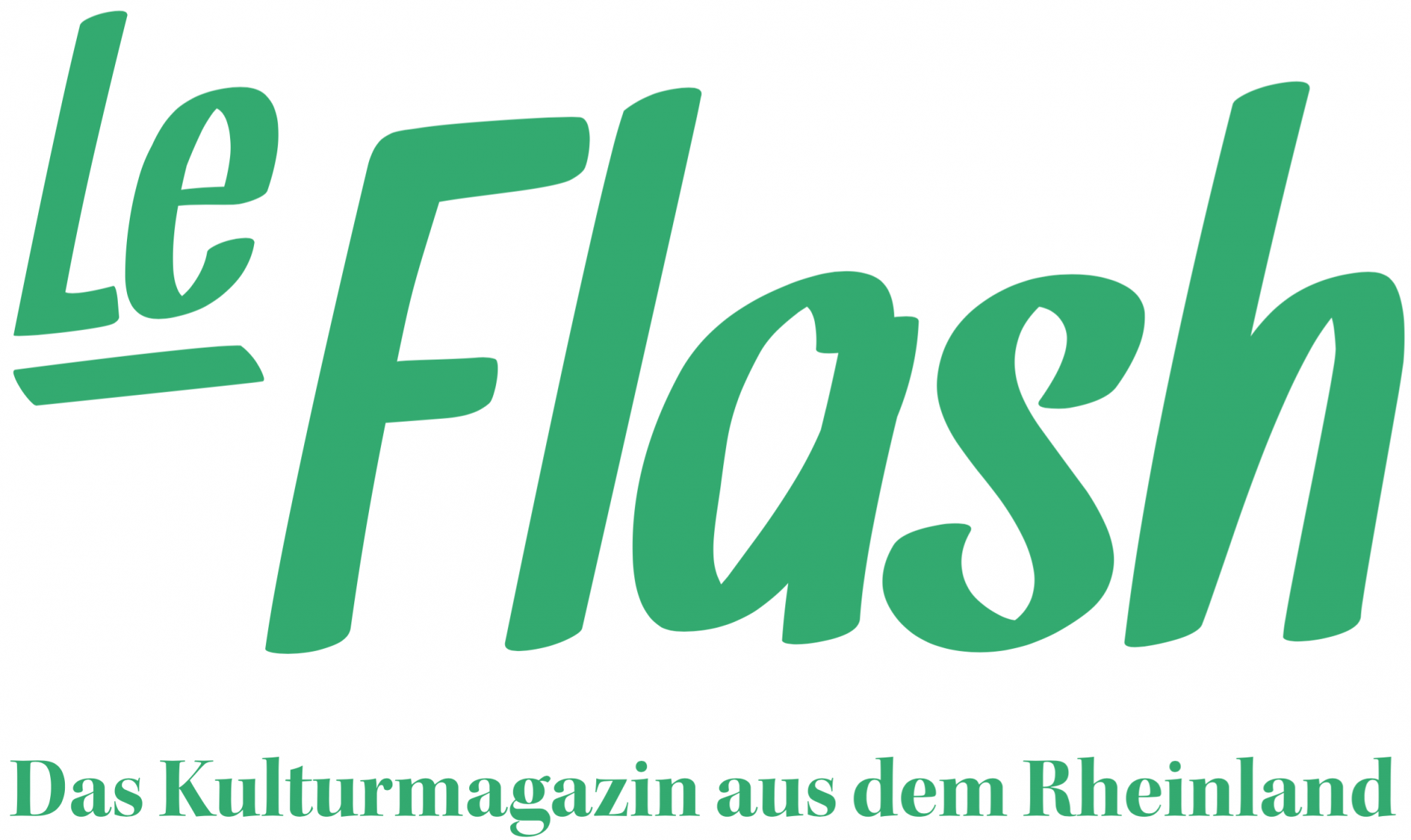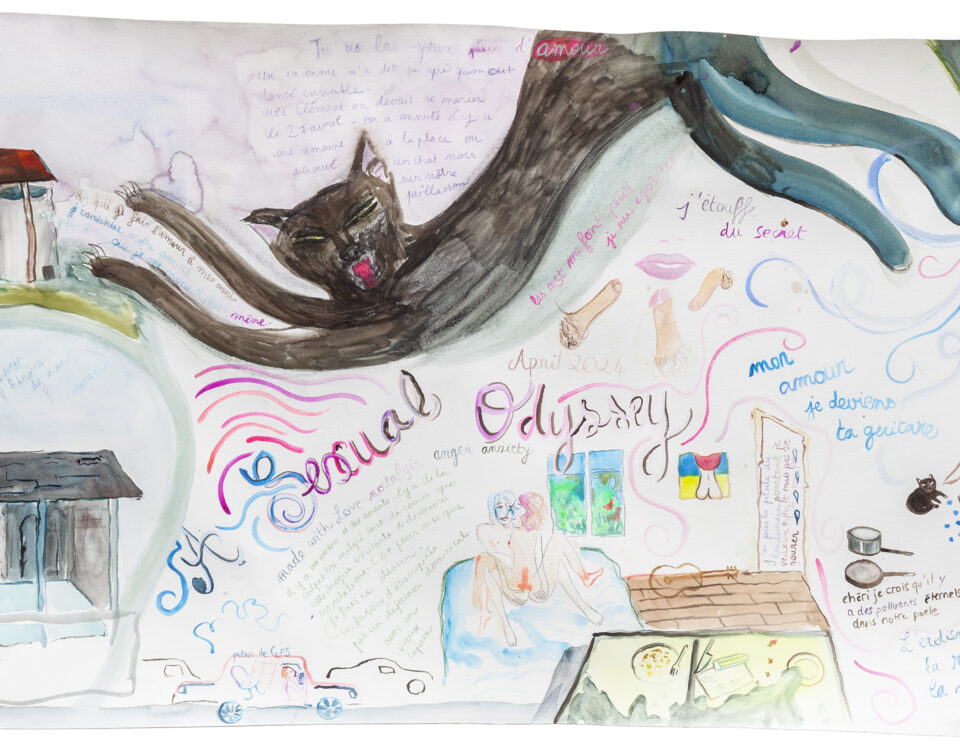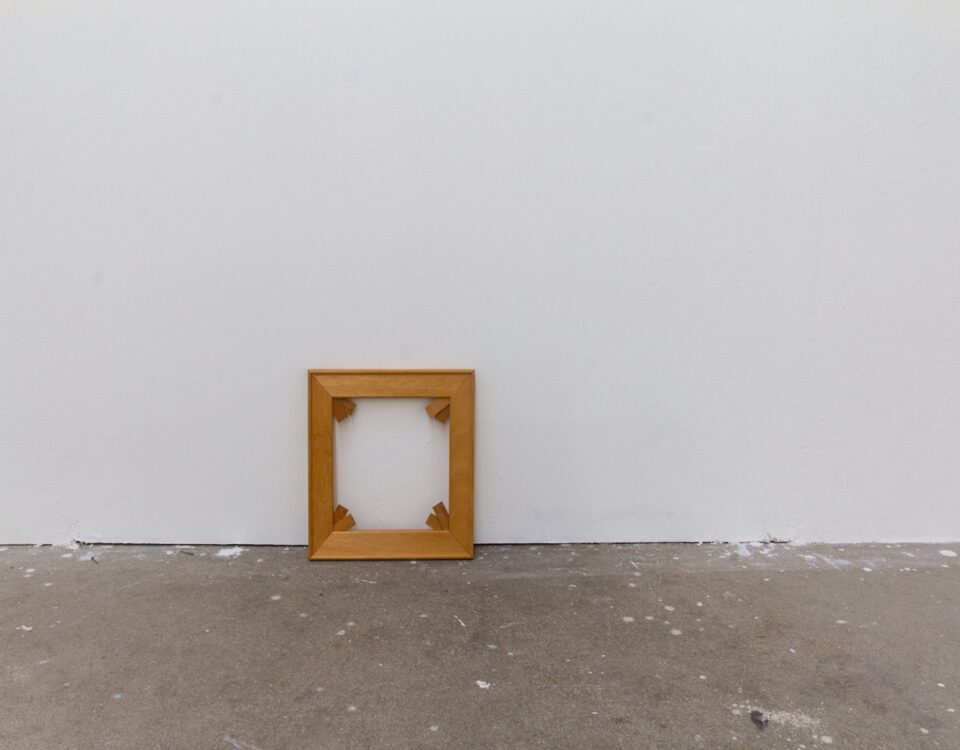„Sometimes making art is a good break from reading Hegel”. Artist-Talk with Anthony DiPaola
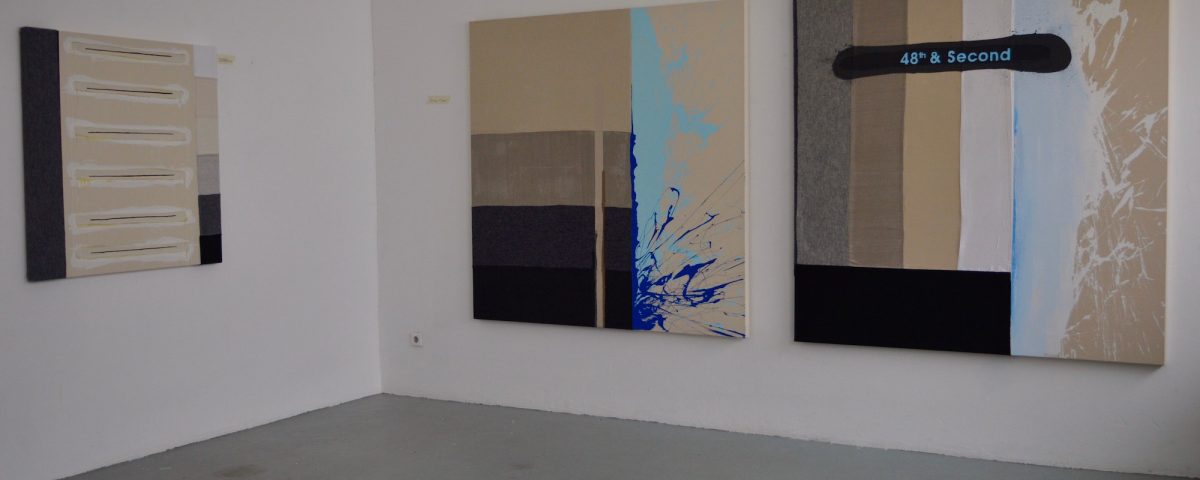
LeFlash used the occasion of the 'Offene Ateliers 2019' to visit the New York artist Anthony DiPaola in his studio. Since 2015 he has worked in the Atelierhaus but now his five year limit is ending. Sophia Bremerich spoke with him about 'Ohrwürmer', the philosophy behind his art and new projects.
Sophia Bremerich: Why did you come to Bonn?
Anthony DiPaola: I came from New York to Bonn because of my kids, the mother of my children got a job here and I followed.
S.B.: How was it to move from New York to Bonn?
A.DP.: A lot of people compare small town Bonn to the big city of New York, but I see it as Rhineland. When I lived in Brooklyn and drove to the Bronx it took me the same time as driving from here to Düsseldorf. I like Bonn a lot, it is relaxing, the architecture is amazing especially the facades of old houses in Altstadt and Südstadt. Bonn is also an international city and I see that when I go for a jog down by the Rhine passing the UN and DHL buildings - since I came here I am always outside.
S.B.: Your website shows only works dating from your time in Bonn. Why?
A.PD.: Life is what happened. I finished my masters when I was 26 and I first had a studio in Washington DC and later a studio in Brooklyn and at 31 my daughter was born. And at that point, 2004 until 2011, I was really concentrated on making money. It was okay because I had a professorship in NY and everything was going well. But I just wasn’t making art and that was killing me. I spent a lot of time at home with a small child and started to read a lot of art theory. That encouraged me to enter a philosophy program where I completed a masters in aesthetics but stopped before completing my dissertation, because of the international move. I didn't start making art again until I arrived in Bonn.
S.B.: So are you only focusing on doing art since you came to Bonn?
A.DP.: My goal would be to teach art theory to students. I am still considering completing my dissertation. But sometimes making art is a good break from reading Hegel.
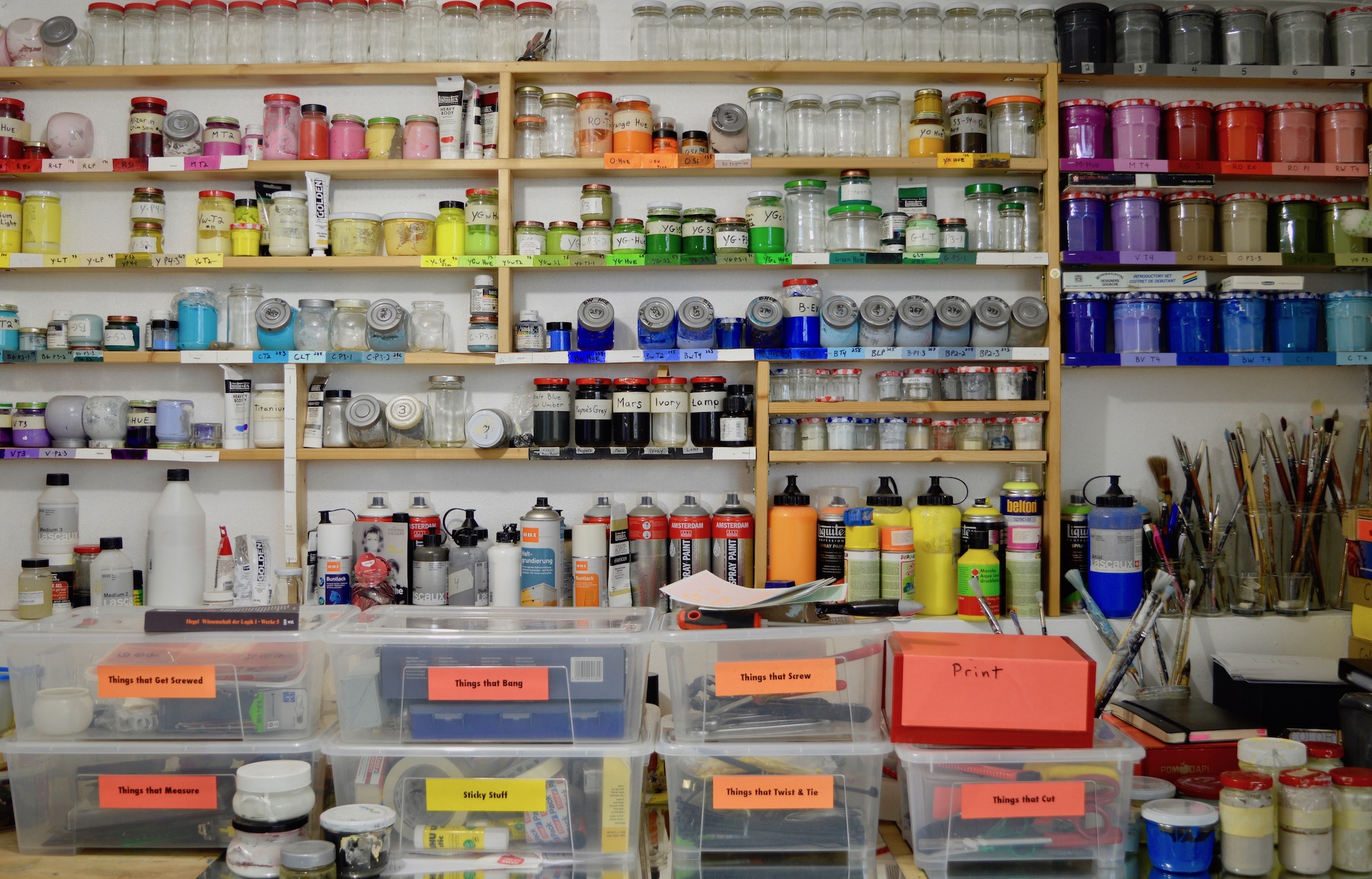
Paint © Anthony DiPaola
S.B.: Is that a reason why you work with words?
A.PD.: To choose the right word in writing is the same as choosing the right color in art. I like the objectness of words sometimes, e.g. in 'Here' and 'There', by switching a 't' it changes the place, it's like two sides of the same coin and that fascinates me - these kind of little things. Where ideas and thoughts come from is often unexpected. Sometimes there are connections that we make through doing, through physically making things, practical work pushes ideas further then sitting and thinking. The same happens when you are sitting down to write. You are working with one organ, it's just your brain. Painting is not only physical, it is also a very meditative process to be in your studio for hours with music on and you disappear in your own thoughts. All the work I am making right now has no words and I anticipate that being open, to what I call an 'Ohrwurm'. A song, the news I read, someone I overheard talking, a movie I saw or a conversation I had are all potential sources for words that can enter a painting.
S.B.: So you do not specially prepare yourself before entering your studio?
A.DP.: It's a bit how the philosophy comes in, like the big 'Dasein'. Being there, being actively present, it's not what's out there, it's not what was, it's not what can be, it's here and now. That’s really important. You need to be there and see it. That’s why I critique seeing art on the internet, you are just seeing images on the screen or flipping though a magazine, the physicality is missing.
S.B.: You have this work called 'Color Test' which is two American flags on canvas, one in black, one in white. Why do you use these contrasting colors?
A.DP.: I work a lot with dualities in my works, comparable with the saying of 'two sides of one coin'. We have the tendency to put things in categories because it's easier to understand, like left wing and right wing. We frame things, we want things in a nice, easy box and we put them into a drawer, a 'Schublade'. Also in Germany there is this saying of 'schwarz auf weiß', in other words, when it's printed, it's true. And there are multiple truths, there is not always one truth. The contrast of the connection with the flag has a lot to do with what's missing, which are the red and the blue. The red and the blue reflect the two political parties, the blue Democrats and the red Republicans. Obama said before he became president that we are not divided by a red or blue America, we are the United States of America. In America they use the saying of 'Getting out the colors', for the person in the military who is responsible to raise the flag every morning. Color Test is what especially photographers and designers use, which is testing the right color, if it's the proper red, or the correct blue. To me it was testing the colors, also the most obvious thing for some people is to make the connection with a black American and a white American, and that’s also a critique from me to the viewer who is not looking beyond what is only skin deep.
S.B.: What do you want to achieve with this work?
A.PD.: I think it has a lot to do with offering perspectives, hopefully offering a different perspective, if it's a possibility to create a dialogue where the viewer comes in and might see and assume one thing. And the question is: Can I also challenge their assumptions? This work has a lot to do with opinions, because art is an opinion: if you like it or you don’t, if it's good or bad, left or right – all these opinions are not based on facts. Everybody is free to have their own opinion, but when you put them together in different groups they can determine different opinions, and opinions are influenced. That’s where my critique starts – it's not always black and white like in 'Color Test'.
S.B.: Last year you became more figurative, why?
A.DP.: It's again about the obviousness and the opinions like the flags in 'Color Test'. I did a lot with self-portraits and I teach a portrait drawing class. For me it's more about fun and not only about art. I like to draw people, but it's not something that I ever felt driven to pursue in my artwork. And how the color and the words work together is much of a game, too.
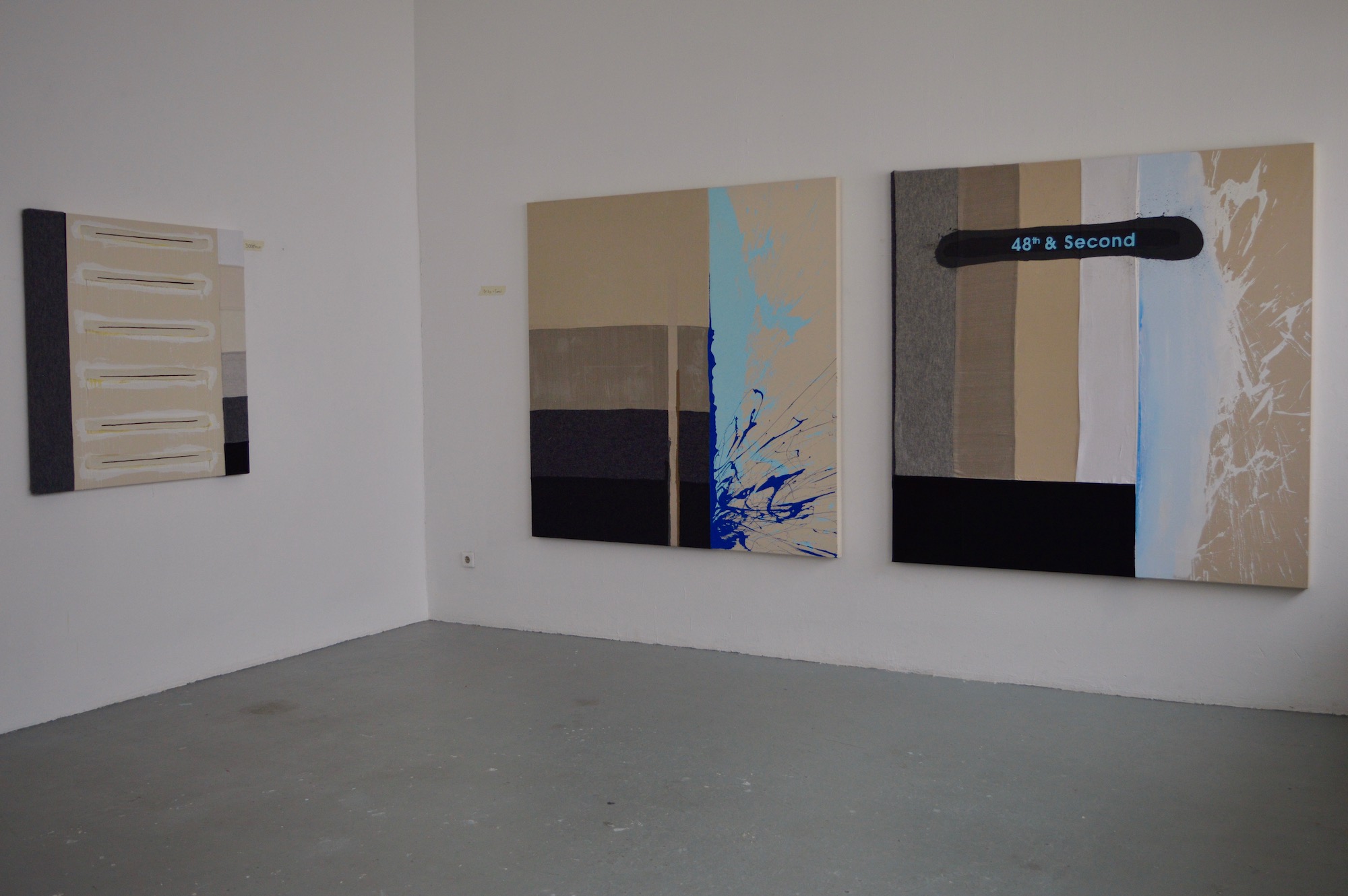
48th & Second / Studio © Anthony DiPaola
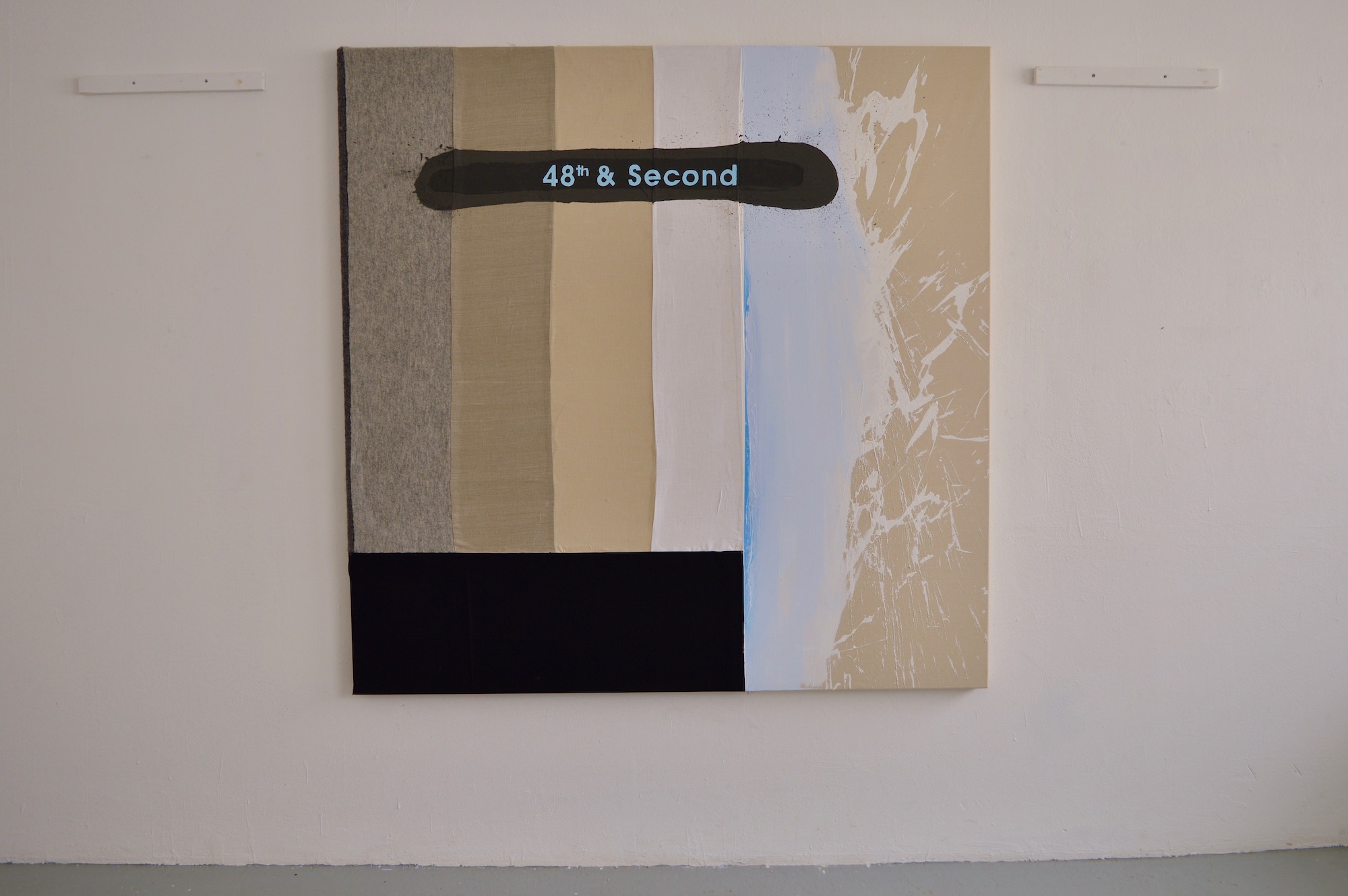
48th & Second © Anthony DiPaola
S.B.: Do you use random faces for your figurative pictures?
A.DP.: Normally it's a combination of google, the idea of people and random people I see.
S.B.: What motivates you to create art?
A.DP.: Motivation is to me everything. It's my therapy to release the 'Ohrwurm', it's my meditative process of being alone and opening myself to experience these things. That hopefully helps me to a new thesis, a new point-of-view. But most of all it's this hopefulness to open up people to see something they never might have seen before. And I am very interested in the space between the thing, 'das Ding an sich', and what it's named. There is a huge 'Spielraum' between in the thing in-itself and what it's called. And this space is where I want to be, that’s what motivates me.
S.B.: Would you say that Bonn shaped you and your work in a way?
A.DP.: I think that my roots, where I come from, is a great influence: New York and the tradition of painting from that city. But what does influence mean? I would say the motivation is what I get from a place and this contains the culture and the language. Here it's the language, I am fascinated with the compounding of a couple of words and becomes a new term. Also my interest in philosophy is German based. My work became more grounded in Bonn. Here, it's more about the level of greyness, because of the Rhineland which is always grey. The greyness of the Rhineland and the New York painters are currently present in my thoughts.
S.B.: Your time here in the Atelierhaus is running out, what are your plans and projects for the future?
A.DP.: I am doing a balancing act between Bonn and Cologne, because my next studio will be in Cologne and my kids are still in Bonn. In my current studio I am playing with the physicality of paintings, specifically the physicality of the object that has a physical relationship to the body, to the person who's seeing it. The simplicity of the canvas is as important as the paint on it, and in my paintings you can always see the canvas. My plan is to investigate different grounds resp. linen, cotton, raw silk, felt and wool and putting them together. It's also important for me to keep the fabrics natural, without dyes or patterns. A traditional painting has many layers: wood, primer, paint and varnish. Separate from 'Art History' we can talk about the individual history of a painting, the physical development, discovering what is hidden and seeing what's uncovered. The sense of history is what I am working on right now. I want to bring people closer to the sense of relationships, of being there, being aware, being attentive to what they are seeing. I like that we call paint a medium and we use it to mediate between things, that's what we are doing. When you have two sides you can use the medial tool to connect these two sides. That's called in German 'Vermittlung'. And what I like to consider is the plan for the future and the plan for today is to release the 'Ohrwurm' that has a lot to do with my past, my home town, New York, what you can extract from my new work titles: 48th & Second, 300 Mercer and Bridge & Tunnel.
